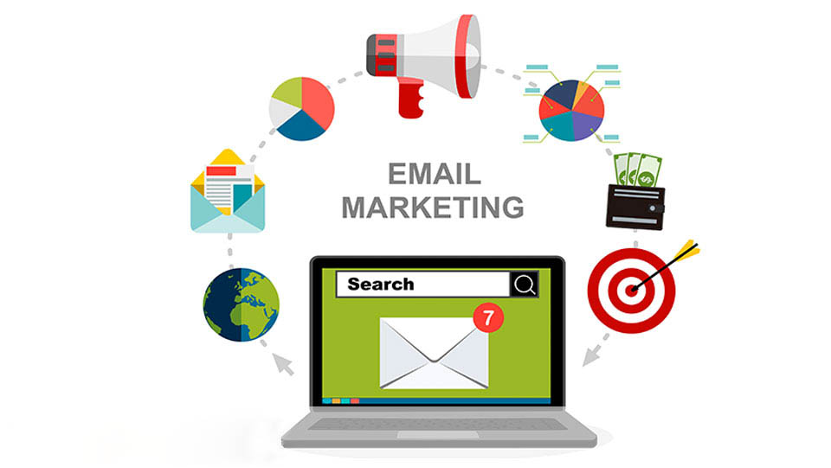The Significance of a Marketing Calendar : Your Roadmap to Success
The secret to being successful in the fast-paced world of marketing is to have an organized and strategic mindset. The marketing calendar is a crucial instrument that assists marketers in accomplishing this goal. In this in-depth tutorial, we will discuss the importance of a marketing calendar, why it is necessary, the various types of marketing calendars, and how to design one to give your marketing efforts a boost.
What is a Marketing Calendar?
A marketing calendar, also known as a campaign calendar or marketing calendar, is a graphical representation of your company’s marketing operations that are scheduled to take place over a certain period. It functions as a systematic timeline that explains when various marketing initiatives, incidents, and promotions will be carried out and how they will be carried out.
Why is a Marketing Calendar Important?
1.Organizational Masterpiece
The instability that is marketing activity can be brought under control with the use of a marketing calendar. It enables you to view the bigger picture and consolidate all of your efforts into one location for easier coordination. This implies that there will be no more late submissions or scrambling at the last minute, both of which can be harmful to the image of your brand.
2. Strategic Planning
Planning is the single most important component of any effective marketing strategy. You can properly strategize with the help of a marketing calendar since it allows you to connect your promotional activities with your company’s goals. It assists you in allocating resources, establishing priorities, and making certain that each campaign has a distinct goal.
3.Consistency is Key
When it comes to successful branding, consistency is the key ingredient. Your messages, material, and branding will remain constant across all media if you have a marketing schedule that is organized and well-structured. This consistency helps to develop trust in your brand and strengthens the identification of your product or service.
4.Enhanced Collaboration
A marketing calendar is an instrument that promotes teamwork and collaboration among members of marketing teams. It offers a centralized platform that any individual can use to access and comprehend the marketing plan. Because of this, there are fewer opportunities for misunderstandings and breakdowns in communication, and everybody is on the same page.
5.Measurement and Evaluation
Execution is only one aspect of effective marketing; assessment and continuous improvement are also crucial to its success. Tracking the performance of your marketing initiatives and determining which strategies are successful and which are not may be done with the help of a marketing calendar. You will be able to improve your tactics for future advertising efforts if you use this data.
Different Types of Marketing Calendars
There are a variety of marketing calendars, each of which may be customized to meet a specific set of requirements and objectives, including the following:
Product Launch Calendar
The process of introducing brand-new goods or services is the focus of a product launch calendar. It details the full product launch procedure, from the pre-launch teasers and launch day events to the post-launch updates and everything in between. This calendar will help you generate enthusiasm for your upcoming product launches and maximize their impact.
Email Marketing Calendar
Your email marketing initiatives are the primary emphasis of an email marketing calendar. It details the end dates, the target sections, and the content of every email campaign. Utilizing this calendar will guarantee that your attempts at email advertising are planned and timed most effectively.
Paid Advertising Calendar
It is necessary for companies that are undertaking paid advertising campaigns to have a paid advertising calendar. It plans out the beginning and ending dates, ad creatives, and expenditures for several advertising channels including Google advertisements, Facebook Ads, and display advertisements, among others.
SEO Content Calendar
To increase the amount of traffic your website receives from search engines, you should use an SEO content calendar. It organizes and prioritize activities such as keyword research, content production, and optimization to improve the rankings of your website in search results.
Holiday and Seasonal Calendar
The holidays and other seasonal events that are significant to your company are the primary emphasis of this form of calendar. It makes it easier for you to design marketing campaigns, offers, and content that are in line with these occasions, which increases the visibility of your business during times of high demand.
Marketing Budget Calendar
Keeping track of all of your marketing costs is easier with a marketing budget calendar. It details the dates on which payments, expenditures, and investments related to marketing operations are expected to be made. It is an essential instrument for both the financial planning and the tracking of the return on investment in marketing.
Content Promotion Calendar
A content promotion calendar stresses not only the development of content but also its dissemination and promotion. It plans influencer partnerships, email campaigns, social media posts, and other tactics to make sure your content is seen by the right people.
Analytics and Reporting Calendar
A reporting and analytics calendar outlines the times for data analysis, report generation, and data-driven decision-making so you can monitor the success of your marketing initiatives. This calendar makes sure you assess your performance regularly and make the required corrections.
Marketing Review Calendar
The dates for routine assessments of marketing strategies are specified in a marketing review calendar. This is an opportunity for your team to evaluate previous performance, consider your goals, and make plans for upcoming marketing initiatives. These reviews assist you in remaining flexible and adjusting to shifting market situations.
How to Create your own Marketing Calendar
Any effective marketing strategy must start with the creation of a marketing calendar. It offers an organized framework for organizing and carrying out your marketing initiatives over a predetermined period, usually a year. Here is a comprehensive, updated tutorial on making a successful marketing calendar:
1.Define Your Goals:
Start by establishing precise and well-defined marketing goals. These objectives must be quantifiable and in line with your overarching business goals. growing brand exposure, generating leads, growing revenue, and entering new markets are examples of common marketing objectives. Make sure that, given your resources and budget, your goals are both attainable and reasonable.
2.Identify Your Audience:
It is essential to the success of your marketing efforts that you comprehend your target demographic. Carry out extensive research to establish the buyer personas that best represent your target customers. Collecting data on a customer’s demographics, psychographics, and purchasing patterns will provide you with a deeper understanding of their preferences, problems, and behaviors. If you have a thorough understanding of your target demographic, you will be better equipped to develop marketing strategies that will speak directly to them.
3.List Your Marketing Activities:
Consider holding a brainstorming session to discuss all of the many marketing efforts you intend to engage in during the year. This ought to comprise a variety of methods and tactics, including the following:
Content Marketing – Prepare articles for your blog, videos, infographics, and any other forms of content that are aligned with the interests of your audience. Learn more about content marketing, click on CONTENT MARKETING STRATEGY AND BEST PRACTICES.
Social Media
Describe the posts, stories, and advertising initiatives that will be included in your social media content calendar.
Paid Advertising
On websites like Google Ads, Facebook Ads, or LinkedIn Ads, specify your advertising campaigns.
Events and Webinars
If you’re hosting or taking part in events, be sure to include the venues, dates, and marketing plans.
Product Launches
If you plan to provide new goods or services, describe the launch plan in full. SEO and Website Optimization: Arrange keyword research, website refreshes, and SEO campaigns.
4.Set Timeframes:
On your calendar, give each marketing activity a distinct beginning and closing date. Be practical in your estimation of the amount of time needed for planning, carrying out, and analyzing the project. When planning your marketing initiatives, you should take into account the seasonality of your company as well as the trends in the sector. Develop a schedule that will allow you to maintain a steady flow of marketing activities throughout the entire year.
5.Assign Responsibilities:
Find out who on the team or in your organization will be in charge of each of the marketing activities. It is necessary to have people or groups assigned to the tasks of content development, design, advertising, analytics, and any other jobs that are pertinent. This implies that everyone is aware of their specific responsibilities in the implementation of the marketing plan.
6.Review and Update Regularly:
A marketing calendar is an adaptable instrument that should develop alongside your company and the changing conditions of the industry. Examine and revise it consistently to accommodate any shifting conditions or new opportunities that may present themselves. Maintain your flexibility and be open to making adjustments as necessary. Make sure that everyone on your team is aware of any changes that have been made and how those changes will affect their responsibilities.
Conclusion
A well-organized marketing calendar is not only a scheduling tool but is also a strategic compass that leads your marketing efforts. It assists you in remaining organized, preserving consistency, and working towards the accomplishment of your organization’s objectives.
Integrating an in-depth and extended marketing calendar into your approach is a smart investment that will contribute to marketing achievement, regardless of whether you are the owner of a small firm or a marketing specialist. Keep in mind that the key to maintaining your competitive edge in the ever-evolving world of marketing is consistent monitoring, analysis, and adaption of your strategies.
FAQs
Q.1 What is a 360 marketing calendar?
A 360 marketing strategy involves reaching your target audience across multiple platforms and channels throughout their entire customer journey. It combines traditional and digital marketing channels, ensuring consistent communication regardless of location or device. As part of this approach, a 360 marketing calendar helps plan and organize marketing activities. For instance, it allows you to schedule social media posts in advance and track what’s already been posted. Overall, it’s about understanding your customers, creating strategic campaigns, and maximizing reach.
Q.2 What should marketing calendar include ?
In order to guarantee thorough planning and implementation of marketing initiatives, a marketing calendar ought to incorporate the main components:
- Campaign Specifics: A brief synopsis of every campaign. The campaign’s specific goals are its objectives.
- Important Times & Dates: The beginning of every activity or campaign & Project completion dates and milestones.
- Timetable of Content: Emails, videos, blog entries, social media updates, etc. The dates on which every piece of material will be released.
- Marketing Initiatives: Websites such as email, PPC, SEO, and social media. Ad Campaigns: Information about any sponsored marketing campaigns.
- Holidays and Events: Some Events in the industry like trade exhibitions, webinars, conferences. Important occasions that have an effect on advertising campaigns such as seasonal holidays.
- Allocation of Resources: Assigning responsibility for every assignment with allotment of budget.
A marketing calendar that incorporates these components facilitates the effective planning, implementation, and monitoring of marketing initiatives while guaranteeing conformity with overarching business objectives and schedules.
Q.3 What is the schedule for marketing?
Marketing schedule must include –
1. Weekly Tasks –
- Content creation: It includes planning, drafting, designing, editing, and scheduling.
- Social Media Management: Share, track, and evaluate interaction.
- Email Marketing: Plan, draft, test, and send emails
- Ad Management: Ads are created, reviewed, optimized, and tracked.
2. Monthly Tasks –
- Material Planning: Create and complete a schedule of material.
- Performance Analysis: Evaluate indicators and modify tactics.
- SEO Updates: Create backlinks, optimize content, and do keyword research
3. Quarterly Tasks –
- Market research: Revisit industry trends and buyer personas.
- Strategic Planning: Establish and evaluate key campaigns and quarterly targets.
4. Annual Tasks –
- Budget Planning: Create a budget and yearly marketing plan.
- Annual Review: Assess overall effectiveness and establish objectives.








